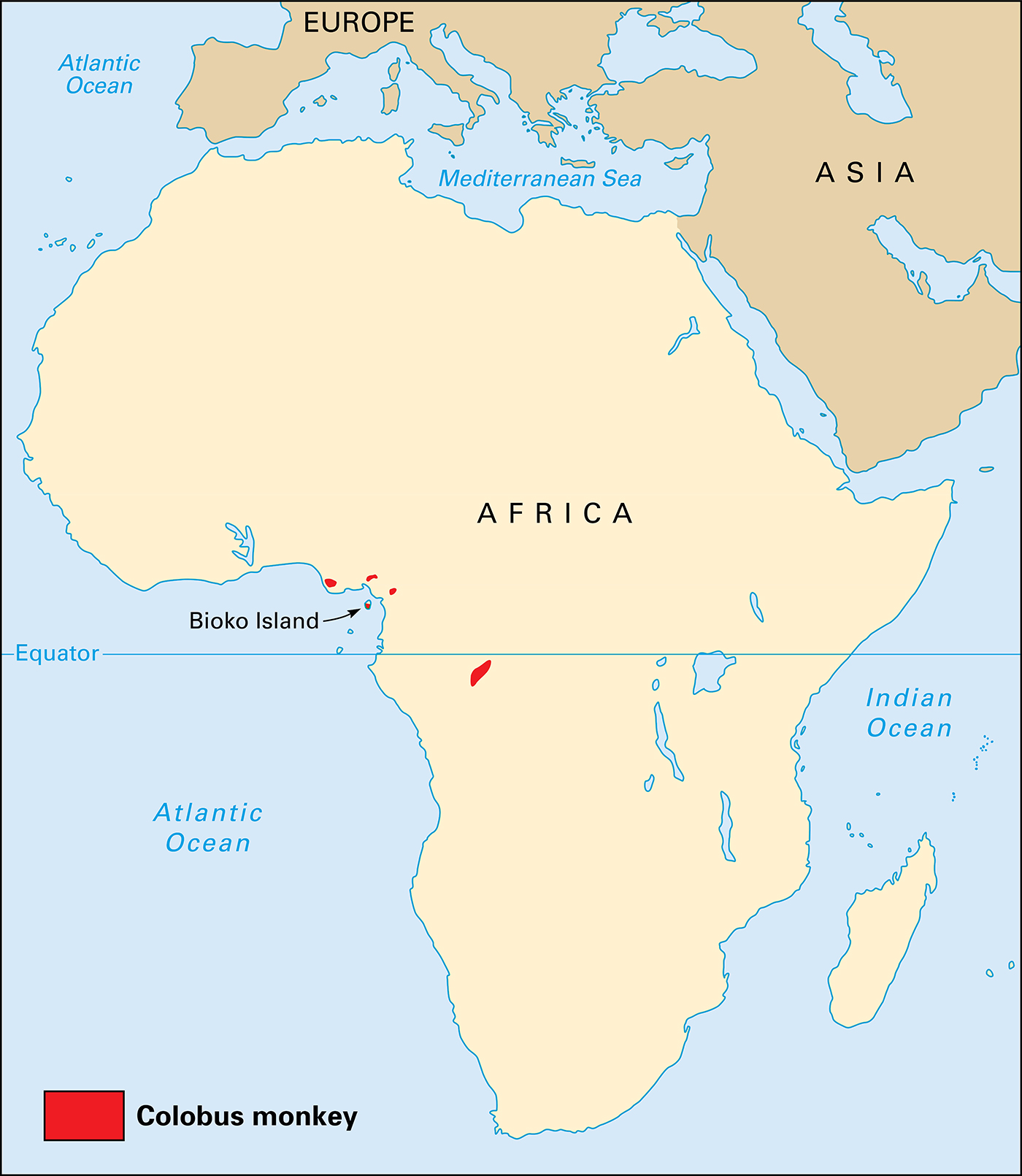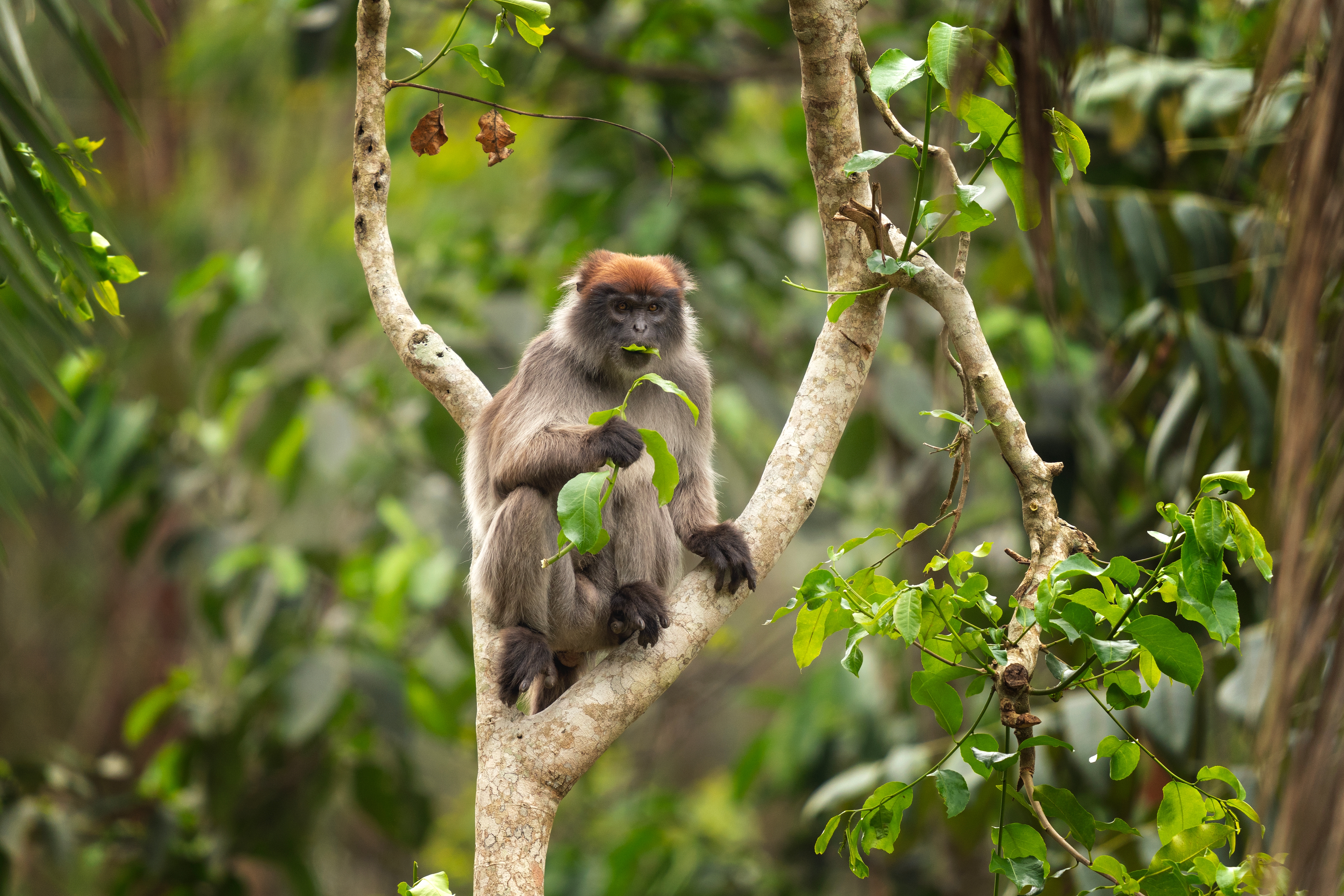Colobus, << KOL uh buhs, >> is a type of monkey that lives in Africa south of the Sahara to the Zambezi River. Adult colobus monkeys weigh from 61/2 to 32 pounds (2.9 to 14.5 kilograms), depending on the species. They measure from 16 to 311/2 inches (41 to 80 centimeters) long, not including a 201/2– to 391/2-inch (52- to 100-centimeter) tail. Males are larger than females in most species. Colobus monkeys have a stocky build. Their fur may be black, black and white, red, or olive. Unlike most other monkeys, colobus monkeys have no thumbs. Many scientists recognize nine species of colobus monkeys.

Most colobus monkeys live in a variety of forested environments, including tropical rain forests, wooded mountain areas, and patches of forests along rivers. They live mainly in trees but frequently travel on the ground. Colobus monkeys are called “leaf-monkeys” because they eat chiefly leaves. They also eat fruit, flower buds, bark, and other plant parts. 

Colobus monkeys live in groups that range from about 3 to 80 members. Most groups consist of a few adult males and several adult females and their young. Some groups have only one adult male. Black-and-white colobus monkeys aggressively defend their territory from other groups. Red colobus monkeys generally do not defend their home areas.
The number of colobus monkeys has declined significantly since the late 1800’s. Both the hunting of the monkeys for their fur and the clearing of forests for settlements and agriculture have contributed to their decline. In some regions, entire populations of colobus monkeys have been eliminated.
